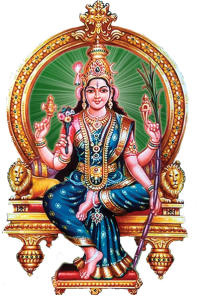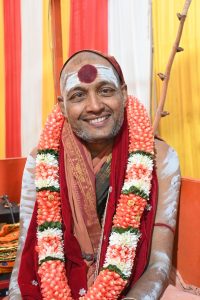
Women have equal right with men to perform all Sadhanas relating to Gayatri described in this book. It has, however, been observed that housewives who are ever much busy in house-hold chores, who have small children to look after and are unable to maintain cleanliness cannot find time to take up difficult Sadhanas. They have to be provided with a technique of Sadhana which is easy and does not take much time.
Those who cannot remember full Gayatri Mantra can make do with chanting the brief Panchakshari Mantra (Om bhoor bhuvaha swaha). During the period of menses they should suspend regular Sadhana.
The performance of Anusthan, if it is being done, should also be suspended during this period. It can be resumed on the expiry of this period, after taking bath. Issue-less women or those whose children have grown up, unmarried women or widows, can conveniently perform Gayatri Sadhana like men.
In routine Sadhana it is not necessary to observe specific rules and restrictions and there is no bar to discharging normal marital functions. But during specific Sadhana or Anusthan, the rule of observing Brahmacharya is to be strictly followed.
Women have always been accorded high respect in the Indian culture. They have been regarded more pious than men. They are often addressed as devi. Girls are named as Shantidevi, Gangadevi, Dayadevi. The word devi is thus often annexed to their names. Girls are adorned not by degrees etc. but by their inherent God-given feminine virtues. Gods and great personalities are often known through the names of their wives. In various names like Sitaram Radheshyam, Gaurishankar, Lakhyaminarayan, Uma-Mahesh, Maya-Brahma, Savitri- Satyavan; women, have been given precedence over men. All thoughtful and wise persons have regarded women more prominent in respect of virtues like chastity, loyalty, mercy, compassion, service, sympathy, love, affection, generosity, devotion etc. Women have, in general been given prominence and respect in all religious and spiritual pursuits. If one goes through the Vedas it will appear that not only rishis but several wives of rishis were also seers to whom Vedic hymns were revealed. How could the great God who is kind-hearted, just and impartial discriminate between man and woman who are his own children? The rishi of the Mantras of RigVed (10/85) is a female named Surya Savitri. In Nirukt, a rishi has been defined as one who is a seer of Mantras, who understands the secret behind them and transmits it to others (“Rishi darshanat stoman dadarshati, Rishyo Mantra drastarah”). In twenty-fourth chapter of Vrihad Devta, a list of women rishis in RigVed has been given which includes the names of Ghosha, Godha, Vishvavara, Aapala, Upnishad, Juhu, Adity, Indrani, Sarama, Romasha, Urvashi, Lopamudra, Yami, Shaswati, Surya, Savitri as being brahmavadinis. The seers of Rigveda’s sukta 10-134, 10-39,10- 40, 10-91, 10-95,10-107,10-109,10-154,10-159,10-189,5-28,8- 91 etc. were women. There is ample evidence which proves that, like males, females used to perform Yagya. They were experts in Yagya technique and religious learning. Several women used to guide their fathers/husbands in this respect. Ida had told Manu that she would do avadhan on fire in such a way that he would get worldly riches, pleasures and respect and attain heaven. In shatpath Brahman, Yagyavalkya’s wife Maitreyi has been called brahmavadini, which means brahmavadan-sheel. Brahma means Ved and brahmavadansheel means one who gives discourses on Vedas. Adi-Shankaracharya had to enter into a spiritual debate with Bharati Devi. Her exposition of the scriptures was so marvellous that even eminent scholars were wonder-struck. Shankaracharya was unable to answer her profound questions and had to seek one month’s time to respond. In Shankar Digvijaya (3/16) it is written that Bharati Devi was well-versed in all the Vedas and other scriptures and branches of Knowledge. None excelled her in knowledge. How can a ban now be imposed on study of the scriptures by women? If there had been such a restriction in the ancient times, how could there have been women who could have philosophical debates with persons like Yagyavalkya, Shankaracharya etc. ? In fact, in those days all men and women had equal opportunities for studying the Vedas. In Shatpath (1/9/2/2/1 and 1/9/2/22,23) there are directions for women about pronouncing Mantras 23/23, 25,27,29 of Yajurved. Same is the case with Mantras 1/1/10 of Tettriya Samhita. Ashvalayan Grahya Sutra 1/1/9 provides that in the absence of yajman, his wife, son or unmarried daughter could perform Yagya. Kathak Grahy Sutra (3/1/ 30 and 26/3) and Logakshi Grahya Sutra (25) propound study and chanting of Ved Mantras and performance of Vedic karmakand by women.
Courtesy: Shri. Shriram Acharya, AWGP








